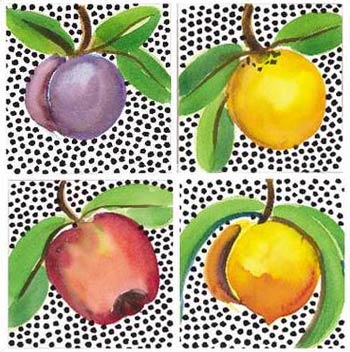|
|
Canku Ota |
|
|
(Many Paths) |
||
|
An Online Newsletter Celebrating Native America |
||
|
July 13, 2002 - Issue 65 |
||
|
|
||
|
'Aang" |
||
|
The Aleut Greeting |
||
|
"Greetings " |
||
|
|
||
|
|
||
|
"Dayamcho yachunne" |
||
|
Moon when limbs of trees broken by fruit
|
||
|
Zuni |
||
|
|
||
|
"A step back to Tradition, is a step forward" Unknown |
||
|
|
||
 |
|
The information here will
include items of interest for and about Native American schools. If
you have news to share, please let us know! I can be reached by emailing:
Vlockard@aol.com
|
|
|
|
Artist: Each year, we highlight some of the NAMMY nominees. This year, we start this series with the Wolf River Band, from Wisconsin. Not only is Wolf River a nominee, they will also be performing at the Indian Summer Festival (which is also where the NAMMY's are going to be held). The Wolf River Band knows a lot of songs. But you will hear their love for traditional country tunes. This makes a special bond with people who know that some songs are timeless, so they should be played time and time again. This band plays its heart out, but there's always more. They also put on a great show. You never know what they're going to say or do. Give them time and something's bound to happen. |
Original Gangstas They were making music before there was America First there are the dancers: They twirl, bob, and sway, 800 men, women, and children dressed in 800 variations on the theme of feathers, beadwork, and bells. The sight is intoxicating, but it is the sounds–of thousands of bells on dancers' ankles and "jingle dresses," of the chantlike singing, and, most of all, of the pounding, insistent drums–that stay with you for days afterward. This is "the song," the heartbeat of the powwow, passed seamlessly among a dozen groups of men seated around a dozen picnic table-size drums from the first Grand Entry to the final steps of the last competitive dance three days later. |
|
|
Thunderhawk Writer Geoff Hampton shares this story that should delight both young and old. |
Tolerance
101 In the next issues of Canku Ota, we are going to share ideas with you about learning and teaching tolerance. Perhaps this will inspire you to come up with your own ideas to share. |
|
|
|
||

|
California Trip Shatters Stereotypes by Dorreen Yellow Bird Even though I have lived in many parts of this country, I believed that the northern Plains was the "real" Indian country after all, North Dakota is my home. And while it is true that this is Indian country, there are, and were, other areas where large groups of Native people live. During my recent trip to the Native American Journalists Association conference in San Diego, I learned that California has many tribes. |
Hollywood Diversity for the American Indian by Roscoe Pond I came to Hollywood five years ago, in 1997,
from Albuquerque, New Mexico. It wasn't an easy thing to do and my
path to California has been one long struggle to make it, to be seen
and heard. I never gave a thought about diversity until I began to go on auditions. Casting agents told me to let my hair down and strip half naked before them. This is the image Hollywood has had of American Indians for over 100 years. |
|
|
|
||
|
In Old Names, a Legacy Reclaimed When the missionaries came north to this frozen land of blizzards and deserts, they could not understand why the people they met, the Inuit, had no last names. Why some men carried the names of female ancestors. Why some women carried the names of their uncles, why a little boy might call his father "my son." Why a grandfather might call his infant granddaughter "my sweet little mother." None of this made sense to the people who came north believing that the Inuit needed to be saved, brought in from the killing wilderness and placed in artificial communities. So the missionaries and government workers set about "correcting" a social system that had been in place for thousands of years. |
Reviving Languages, Saving Cultures "Windtalkers," this summer’s
box office drama about World War II’s Navajo code talkers, may
have brought the beauty of Native American languages to the big screen,
but in real life, many make up a growing list of endangered tongues.
The painful legacy of assimilation and the dominance of majority culture have both taken their toll. Fewer than 150 Native American languages out of the hundreds that once existed remain. And as fluent speakers become older in age and fewer in number, the fate of the remaining Native American languages rests with the youth. |
|
|
|
||


